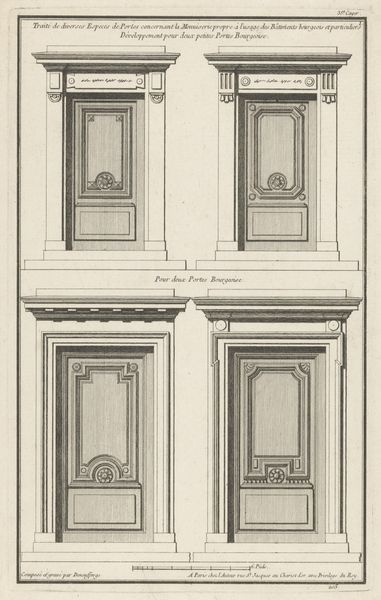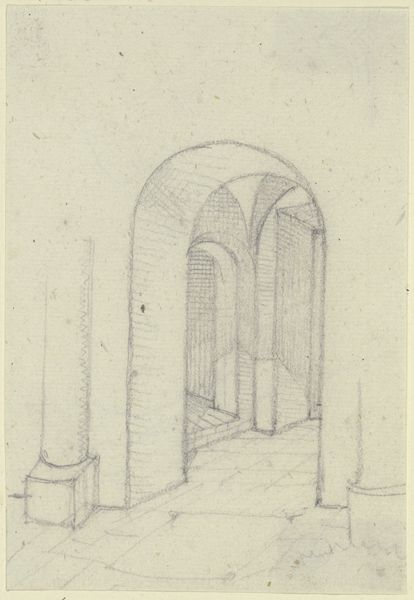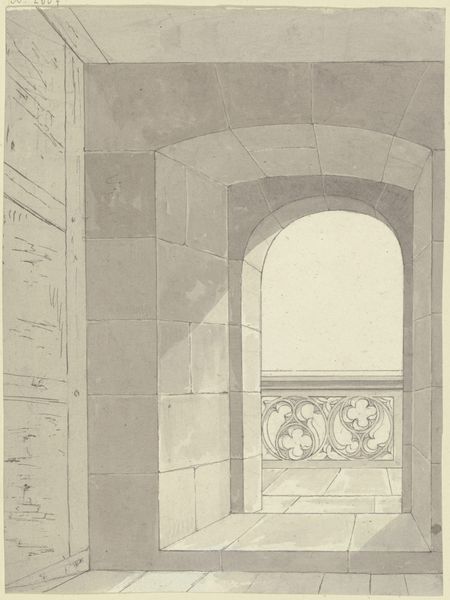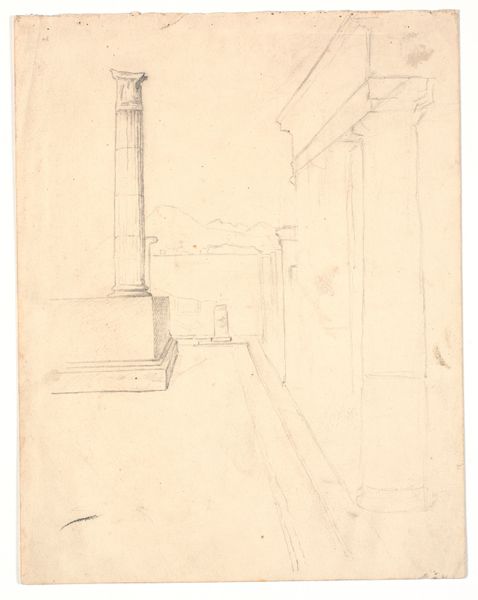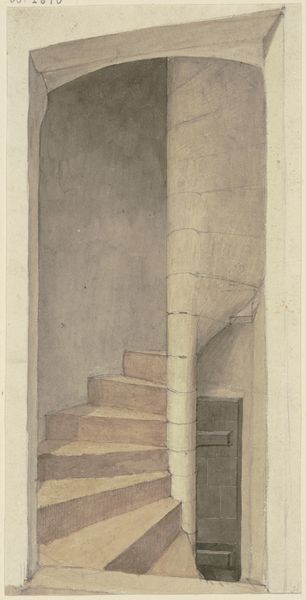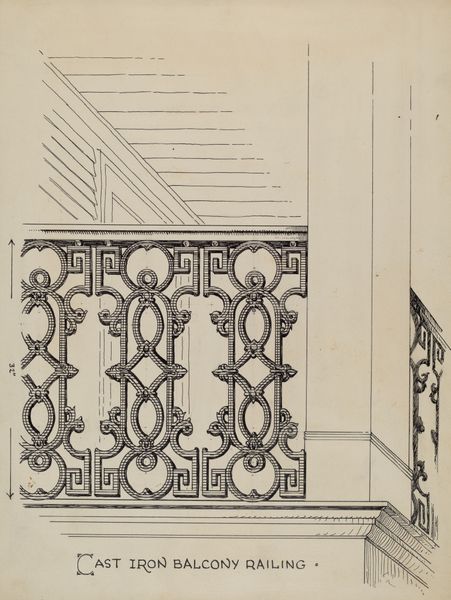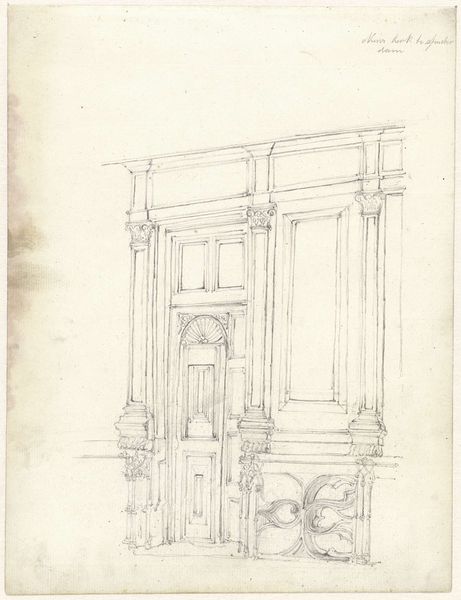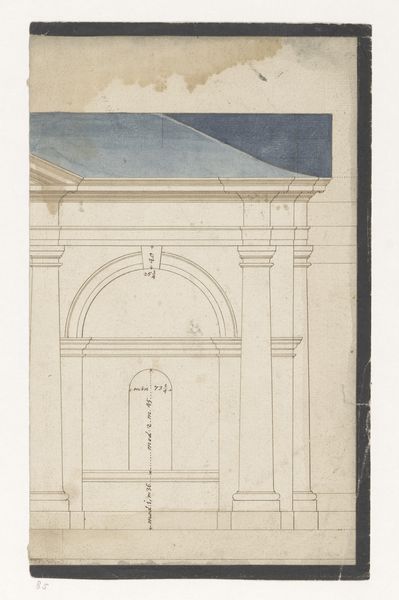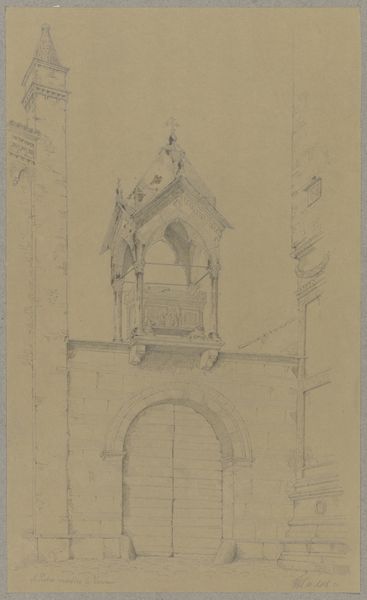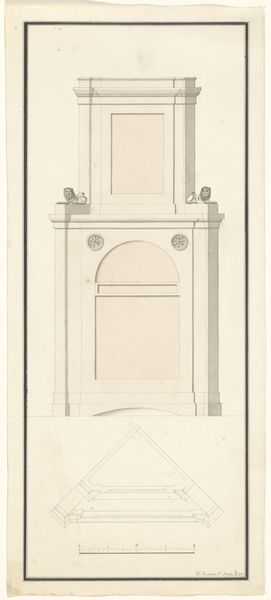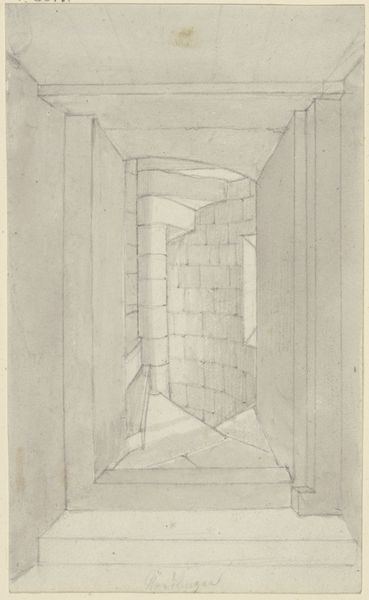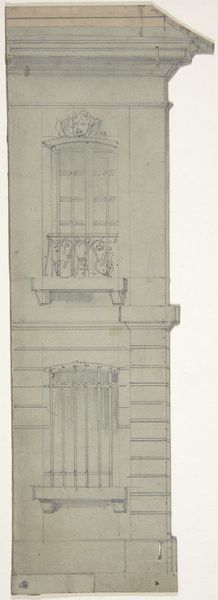
drawing, paper, ink, pencil, architecture
#
drawing
#
paper
#
form
#
ink
#
geometric
#
pencil
#
line
#
academic-art
#
architecture
Copyright: Public Domain
Editor: Here we have Karl Ballenberger's "Polygonal Column," a drawing in ink, pencil, and paper. The architectural drawing has this ethereal quality. What strikes you when you look at it? Curator: I'm drawn to the clear display of labor and resources. The meticulous lines demonstrate a calculated process. Notice the unadorned presentation; we are focused on the pure structure itself. How does this highlight the intersection between artistic skill and the architectural industry of the period? Editor: Well, it’s like a blueprint elevated to an art form, showing not just the design but the artist's technical skill. Was this kind of architectural drawing considered ‘art’ or a trade skill at the time? Curator: That’s precisely the question we must consider! Boundaries blur. Was Ballenberger intending to purely representational, or to express an idea of ideal construction, craftmanship or something more profound? The materials—pencil, ink, paper—are all quite modest. What does this suggest about the accessibility and perhaps the value placed on architectural design itself? Editor: I suppose it suggests that accessibility doesn't dictate quality. The simplicity underscores the foundational importance of form, like the building blocks of creativity, in a way. Curator: Precisely! We witness a dialogue between material, labor, and purpose, reminding us that even the most practical creations are rooted in artistic considerations and skill. It's this understanding of how art and labor inform one another that brings this piece into focus. Editor: I’m definitely seeing how a simple drawing invites complex questions about value, labor and intention. Thanks for shedding light on this piece. Curator: My pleasure. Art is often found in the act of revealing processes.
Comments
No comments
Be the first to comment and join the conversation on the ultimate creative platform.
